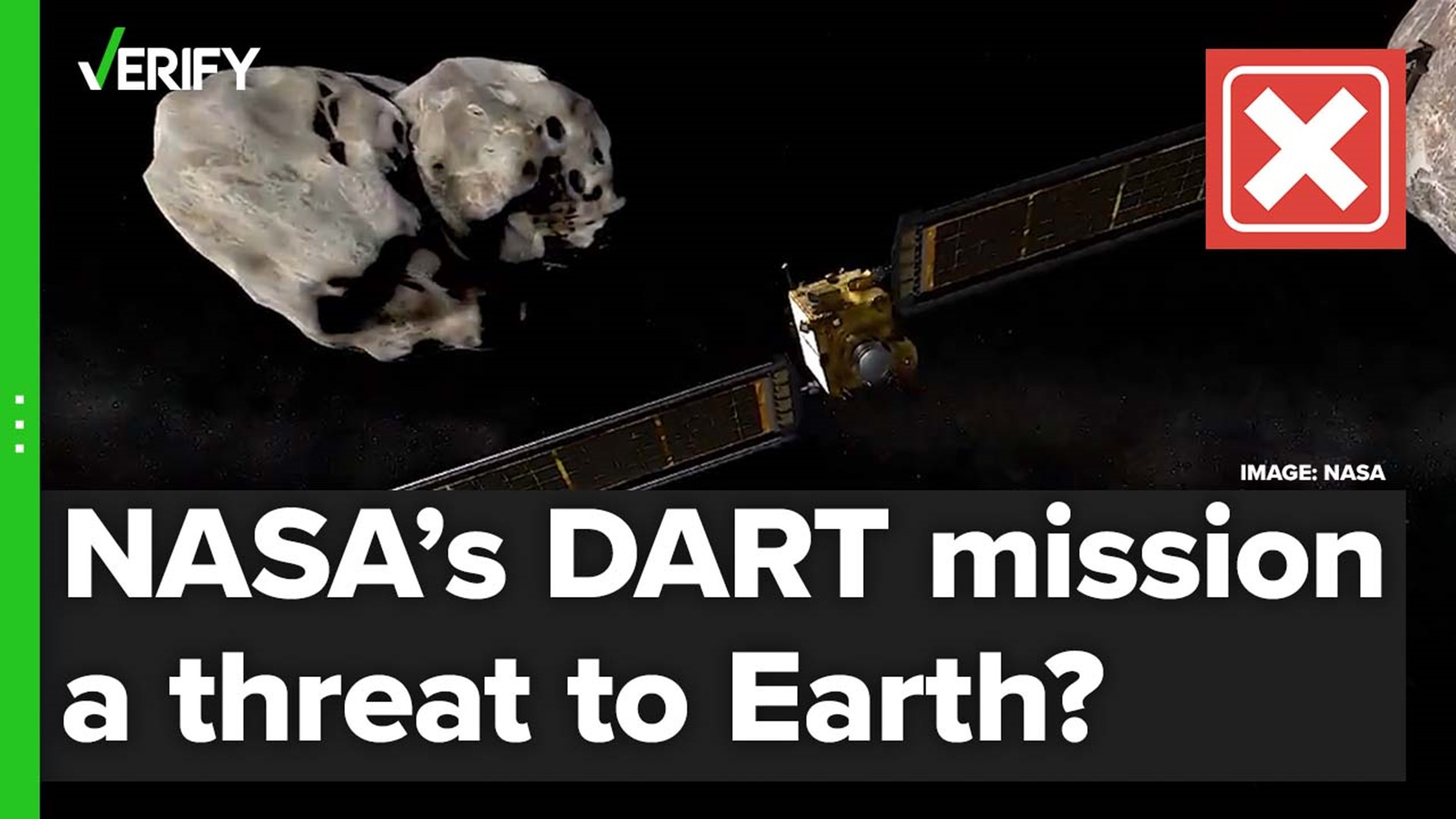UPDATE (10/13/22): NASA announced on Oct. 11 that the DART test successfully altered the orbit of the target asteroid, proving an asteroid's path can be changed by crashing a satellite into it. NASA confirmed that neither the asteroid impacted nor the larger asteroid it orbits pose a threat to Earth.
UPDATE (9/26/22): A NASA spacecraft known as DART crashed into an asteroid on Sept. 26 in a test to see if a potentially menacing space rock could be knocked off course. NASA did not hit the target asteroid with a large enough satellite to knock it out of orbit. The original story, which discusses why the target asteroid was chosen by NASA and how the test poses no risk to Earth, continues below as originally published.
On Nov. 23, NASA launched the satellite for its Double Asteroid Redirection Test (DART), a mission in which NASA is testing its ability to defend Earth from hazardous asteroids by crashing a satellite into one to redirect its orbit.
The asteroid they’re using for this test is one that isn’t expected to come anywhere close to Earth. But some spectators have feared that this test could inadvertently redirect the asteroid’s path into Earth.
THE QUESTION
Does a NASA test to redirect an asteroid pose a risk to Earth?
THE SOURCES
- NASA
- Johns Hopkins University Applied Physics Laboratory (APL)
- Dr. Tom Statler, program scientist for the DART mission
THE ANSWER
No, this test doesn’t pose a risk to Earth. NASA’s test is on an asteroid that orbits another larger asteroid, and the satellite NASA is using to test this is incapable of knocking the target asteroid out of the larger asteroid’s orbit.
WHAT WE FOUND
DART is a satellite designed to be a planetary defense test of technologies that could prevent a hazardous asteroid from hitting the Earth, NASA says. NASA’s goal in the mission is to crash its satellite into the asteroid to create a measurable change in its motion. DART should hit the asteroid in late September or early October 2022.
“All we're trying to do is make a change in the asteroid’s motion that is large enough for us to measure with telescopes on Earth to get a baseline ground truth for our theoretical model,” said Dr. Tom Statler, program scientist for the DART mission. “And understand how in practice we might apply this, if we ever get in a situation where we have to apply it on a real asteroid that’s dangerous.”
On top of helping them figure out exactly how much an impact would change an asteroid’s motion, the mission should give scientists a better idea of where in an asteroid’s orbit may be the best place to hit it from, both in terms of impact and in terms of where it may be the most accessible from Earth, Statler said.
NASA says its target asteroid is not a threat to Earth, and everyone involved in the mission is confident that it won’t become a threat even after they hit it. Statler says there’s several reasons the test doesn’t pose a risk to Earth.
“Even at the tremendous speed that DART is going to impact the asteroid, it's only the mass of a cow,” Statler said. “Against the mass of an asteroid, there is just no way DART is big enough to change the orbit of the asteroid enough for it to become a danger to Earth. It just isn't going to happen.”
The asteroid DART is targeting is the smaller asteroid, called Dimorphos, in a system of two asteroids, according to Johns Hopkins University Applied Physics Laboratory (APL), which is working with NASA on the test. Dimorphos orbits around the larger asteroid, called Didymos, which is in turn orbiting around the Sun.
“So even if DART gave Dimorphos a larger than expected push, it is still in orbit around Didymos,” Statler said.
This also gives NASA something it can measure; the APL says the DART impact should shorten the time it takes Dimorphos to orbit Didymos by several minutes.
Scientists have a good understanding of how asteroid orbits work. “It takes a certain amount of observations of data to be able to figure out what that orbit is,” Statler explained. “But once we've got it, we've got it pretty much nailed. And we know where it is.”
NASA says no known asteroid the same size as or larger than Dimorphos has a significant chance to hit Earth in the next 100 years. However, only about 40% of such asteroids have been found, NASA says.
“You can't deflect the asteroid if you don't know that it’s there,” Statler said. “And so the most important thing we do in planetary defense still is looking for asteroids, finding asteroids, tracking them, determining their orbits and projecting what they're going to do in the future. And we're definitely not done with that job yet.”

